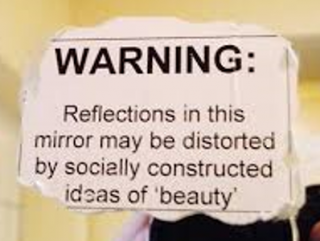
As we enter the new year, we are all still faced with the realities of a global pandemic. This is a stressful time for so many of us. A new year can be a time to reflect on growth and change. One way to do this is through setting intentions around the new year based on our values and what is important to you. Here are 10 tips for setting some intentions.
- Limit and monitor your social media & news intake. Staying connected to people via social media is important. And staying informed about world events is important. But it’s so easy to get caught up in the daily scroll of news feeds and updates that you end up wondering “where’d the time go?” and you walk away feeling heavy, discouraged, and scared. Think about ways to bring more intention to what you’re absorbing from what your viewing. Are there accounts that you might unfollow? You may also try rearranging your home screen to reflect the apps you want to visit.
One the things you have control over right now is how you spend your time.
- Create structure and routine. Chances are, your life looks different now… One of the best ways you can stay grounded is to create routines and structure for yourself. It’s important that your routine isn’t too elaborate or intricate. Establish realistic goals and expectations for yourself. Choose 1 thing to try today!
Choose 3-5 things you want to do every morning or throughout the day.
| Sit in silent meditation/prayer | Stretching | Listen to a guided mediation |
| Journal | Listen to a podcast | Read a book |
| Drink coffee/tea | Walk the dog | Write down a daily gratitude |
| Shower | Sit outside | Journal |
| Go for a walk | Listen to music | Make your bed |
| Do gentle yoga | Read inspirational text | Get dressed for the day |
| Brush your teeth | Watch a TED talk | Other: |
| Drink a glass of water | Do a crossword puzzle | Other: |
- Setting boundaries. Working or doing school from home? Try to plan ahead what your working hours will be and stick to them. Find what works best for you and then set boundaries that hold you accountable. You may also want to take a close look at your relationships. Constantly taking in other people’s emotions is exhausting and can harm your own mental health.

Photo by Lisa Fotios from Pexels
4. Find compassion. Although many of us are able to find compassion for others during this time, it might be a little more difficult to practice self-compassion. Find ways to recognize your own struggles and meet yourself with kindness and understanding. We are all in this together.
- Develop or grow your mindfulness practice. Pick a mindfulness practice that works for you and start integrating it into your morning, afternoon, or nightly routine. 5-10 minutes a day is all you need to notice a profound impact on your mood, thoughts, and overall wellbeing.
Here are some great mindfulness apps: Insight Timer, Oak, Breathe+, Calm, Mindshift, Headspace
We are living in a stressful time. Stress lowers the immune system, affects your sleep, and creates tension in your body. It is so important for us to keep our mind and body connection. Meditation and mindfulness exercises are one of the most effective (and free!) ways you can decrease your stress levels.
- Get creative! This is a perfect time to pick up an old hobby or learn a new skill. A sense of purpose is crucial for staying mentally afloat. Maybe do something you haven’t tried before- take a paint class, go on a camping trip—whatever you might be interested in!
- Maintain social connections. Social distancing doesn’t have to equal loneliness. We are social creatures. We are wired for social connection and it is vital for our well-being. There are plenty of ways to stay connected to others while staying inside your home. Phone calls, Facetime, Skype, Marco Polo, Zoom are all ways to connect with people in real-time. Schedule time in your schedule for human connection.
Find other ways to attend social gatherings. Churches are live-streaming their services, studios are offering weekly yoga/art classes via Zoom every week, and businesses are using this opportunity to up their virtual game and many places that didn’t previously have online offerings now do.
- Feel your Feelings. It’s okay to feel your feelings… even the uncomfy ones! This is a time to stay connected to our internal experiences.
Observe, name, and notice what arises within you. And then… Let them go. Intense emotions serve as information and as guides. And we must let them pass through our body rather than hold on. Make time and space in your day for thoughtful reflections. Create time for journal, prayer, reflection. Whatever brings you closer to your inner wisdom.

Emotions are tunnels. You have to go all the way through the darkness to get to the light at the end.
-Emily Nagoski
- Joyful movement and rest. Movement can help our physical and mental well-being. Joyful movement is about choice and recognizing that all kinds of movement are valid. Find something that feels good and brings you joy. Listen to your body and what it needs. If it needs rest- rest!
- Keep showing up. Keep your therapy and nutrition appointments! Now IS the time to talk openly about your feelings. To get support. To find someone you trust. To lean on a guide.
We are offering sessions virtually and in-person to keep people connected. We are here for you. Keep logging on Recovery Record. Keep showing up in your recovery.
Taking care of yourself is the most important thing you can do for the world right now.

 Post-traumatic stress disorder (PTSD) can occur after you have been through a trauma. According to US Department of Veterans Affairs, approximately 8 out of every 100 (around 7-8% of the population) people in the U.S. will have PTSD at some point in their lives (Gradus, 2020). A common emotional symptom that individuals suffer from with PTSD is shame. This can be true even if there is nothing objectively to be ashamed of. PTSD symptoms can be intense and impact many facets of a person’s life. Shame or guilt can interrupt our beliefs about ourselves and our worldview (Johnson & O’Brian, 2013). Self-compassion can be an important but difficult step in trauma recovery.
Post-traumatic stress disorder (PTSD) can occur after you have been through a trauma. According to US Department of Veterans Affairs, approximately 8 out of every 100 (around 7-8% of the population) people in the U.S. will have PTSD at some point in their lives (Gradus, 2020). A common emotional symptom that individuals suffer from with PTSD is shame. This can be true even if there is nothing objectively to be ashamed of. PTSD symptoms can be intense and impact many facets of a person’s life. Shame or guilt can interrupt our beliefs about ourselves and our worldview (Johnson & O’Brian, 2013). Self-compassion can be an important but difficult step in trauma recovery. Every day we are bombarded with media messages about how to look, how to act, and how to feel. People often compare themselves to these media images and beauty standards and assume that it’s not only ideal, but also achievable. However, this doesn’t take into account that these images are often altered or distorted. Countless studies have found that these media messages impact how we feel about ourselves and can lead to a negative body image.
Every day we are bombarded with media messages about how to look, how to act, and how to feel. People often compare themselves to these media images and beauty standards and assume that it’s not only ideal, but also achievable. However, this doesn’t take into account that these images are often altered or distorted. Countless studies have found that these media messages impact how we feel about ourselves and can lead to a negative body image.

 We are all human, we all have short-comings and we all deserve compassion. We deserve compassion from others, and from ourselves. This Valentine’s Day I invite everyone to open your heart to yourself and celebrate your common humanity.
We are all human, we all have short-comings and we all deserve compassion. We deserve compassion from others, and from ourselves. This Valentine’s Day I invite everyone to open your heart to yourself and celebrate your common humanity.


